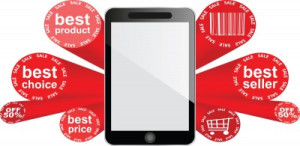In Three Simple Steps
1. Plan Ahead
Never wait until you are completely out of an item to add it to your shopping list. Staying aware of your current stock allows you to pre-plan your shopping trip. Instead of being trapped in the land of impulse buys, having to take whatever price you find, you can watch your local weekly ads and coupons to plan ahead and find the best deals. Always remember that food can be frozen; if Kroger’s meat sale includes your favorite ham, buy it!
Don’t be afraid to clip coupons before you need an item. Some shoppers store a small folder in their purse or car to hold coupons in case they find an item; other shoppers plan their list around what coupons they have. Coupons’ effective dates can range from a few weeks to several months.
2. Take Advantage of Rewards Programs
Every shopper has been there: checking out with a large order of groceries, when the cashier asks if we have or want the rewards card. If you don’t, sign up! Rewards programs allow customers access to special savings, coupons, and other ways to save. Some store programs – such as those offered at Ralphs and Vons – offer savings on gas when you slide the card at certain stations.
Some rewards cards, like the one at Food 4 Less, allow you to store digital coupons. Simply key in your card at the register, and voila! Instant savings.
3. Take Advantage of Technology
Most stores realize that we are in the Digital Age. Practically every store has a website or offers digital coupons; a few stores even offer apps to keep track of rewards cards. Use these resources to help plan your shopping trips.
Another use of technology is through productivity apps. With these file-sharers, you can create your list on one device – say, a desktop computer – and then access it with another – such as a phone or tablet.
